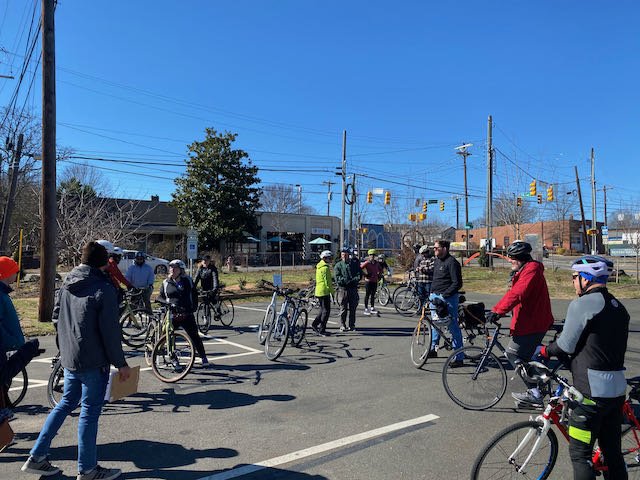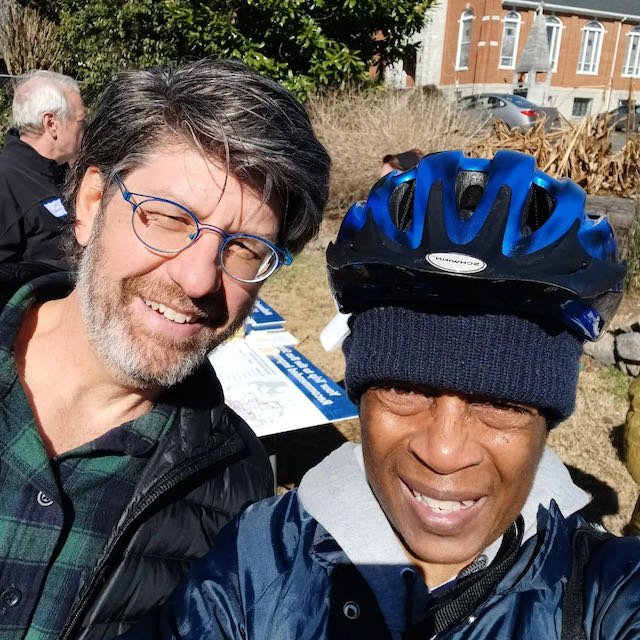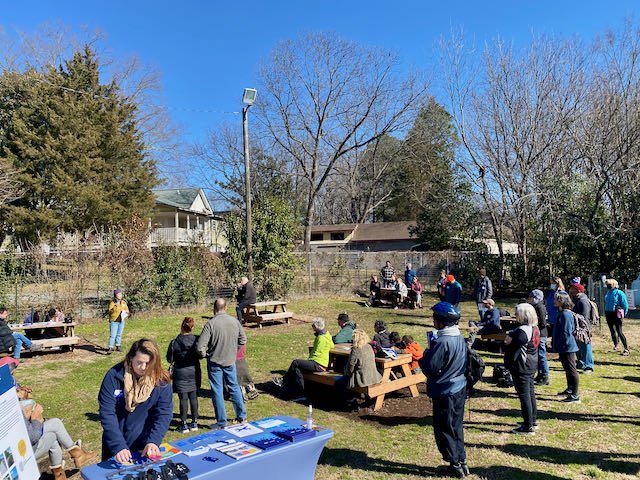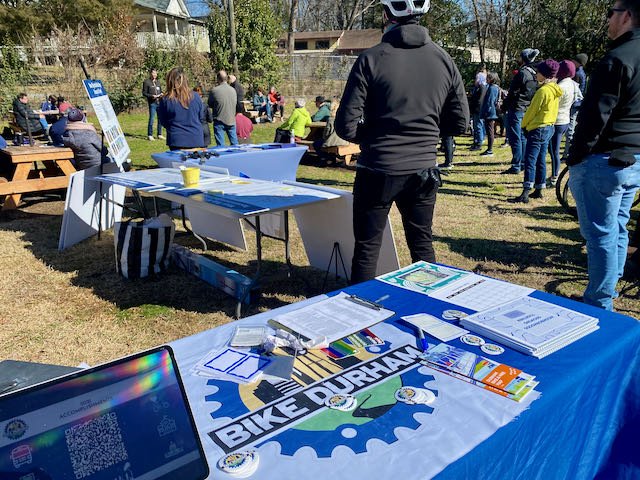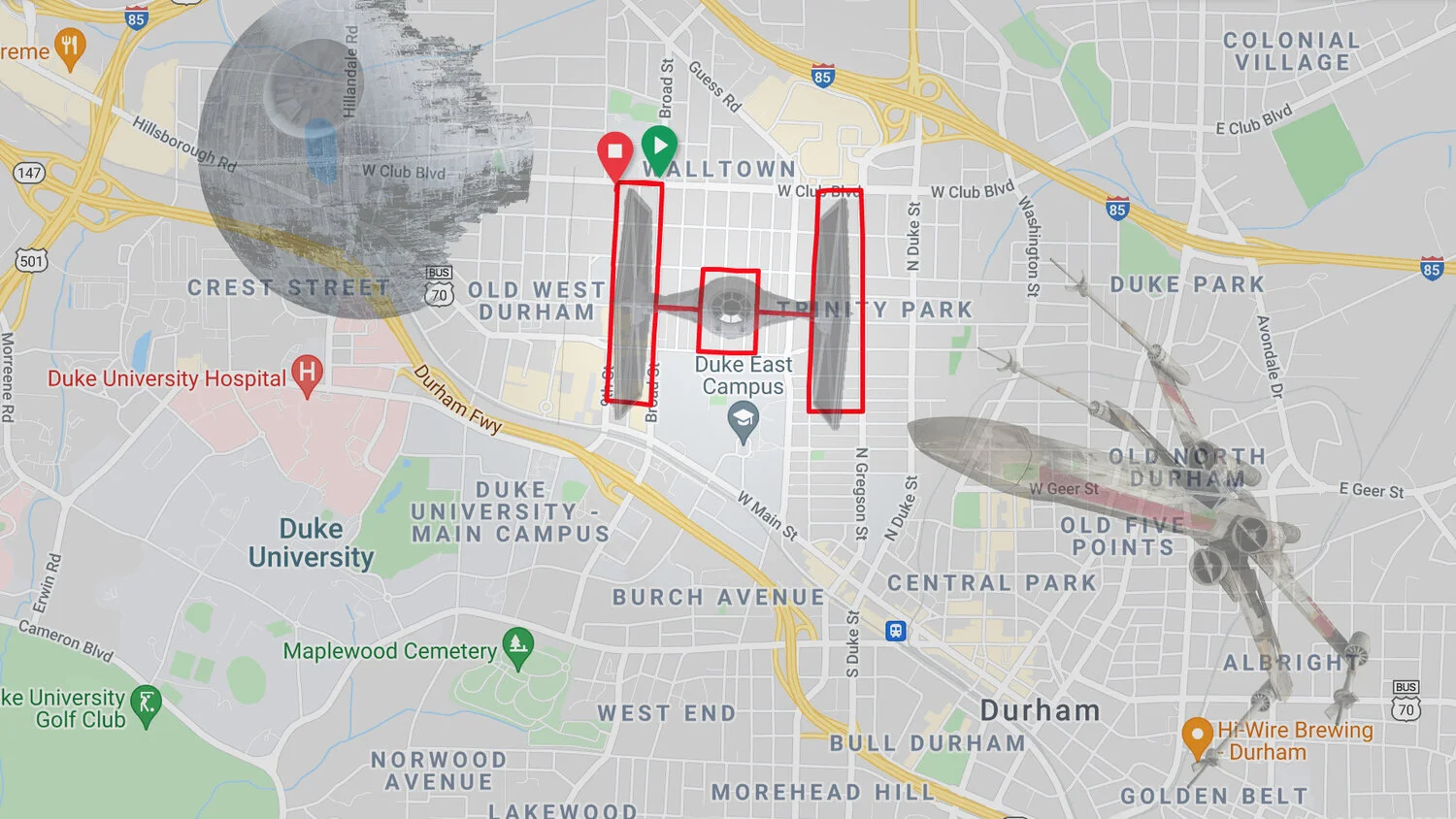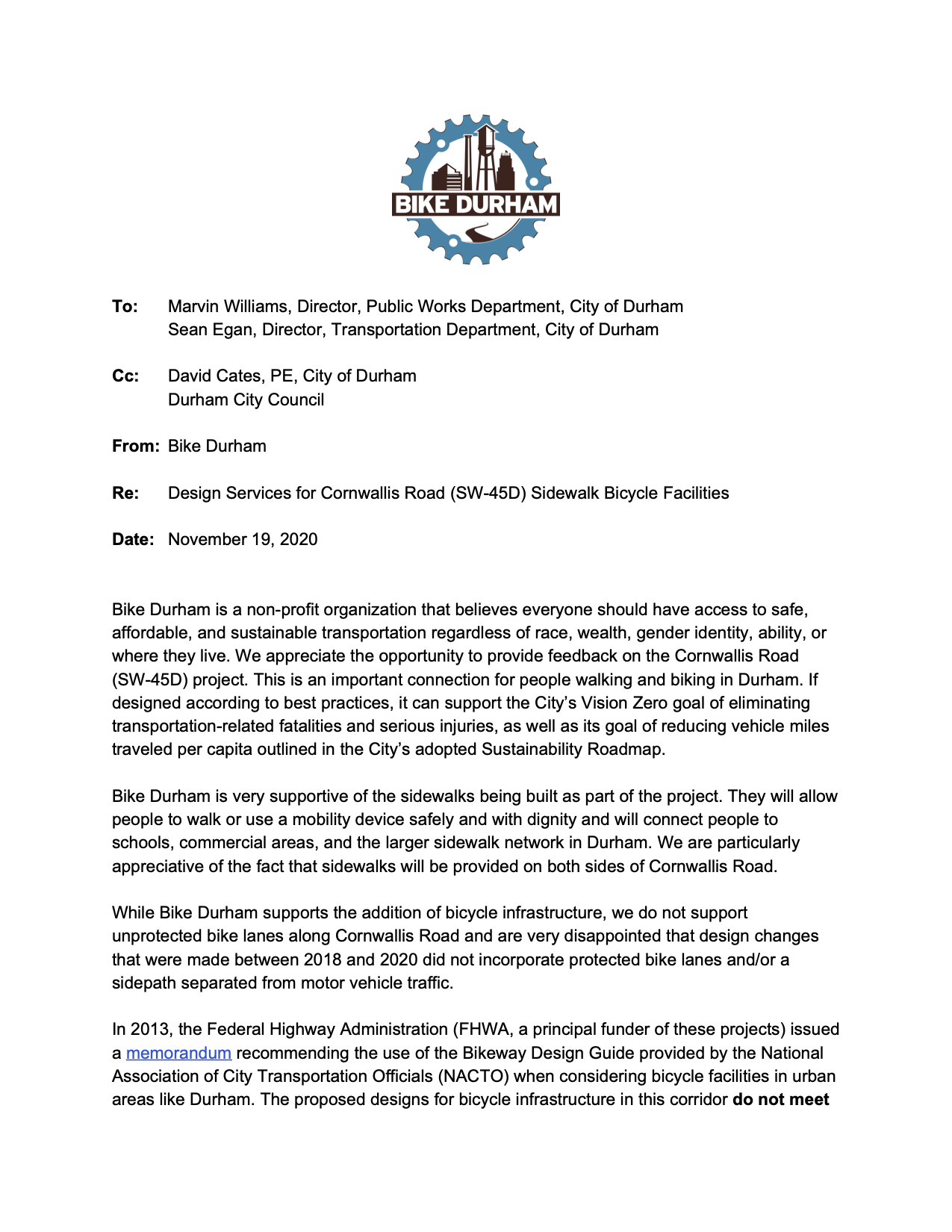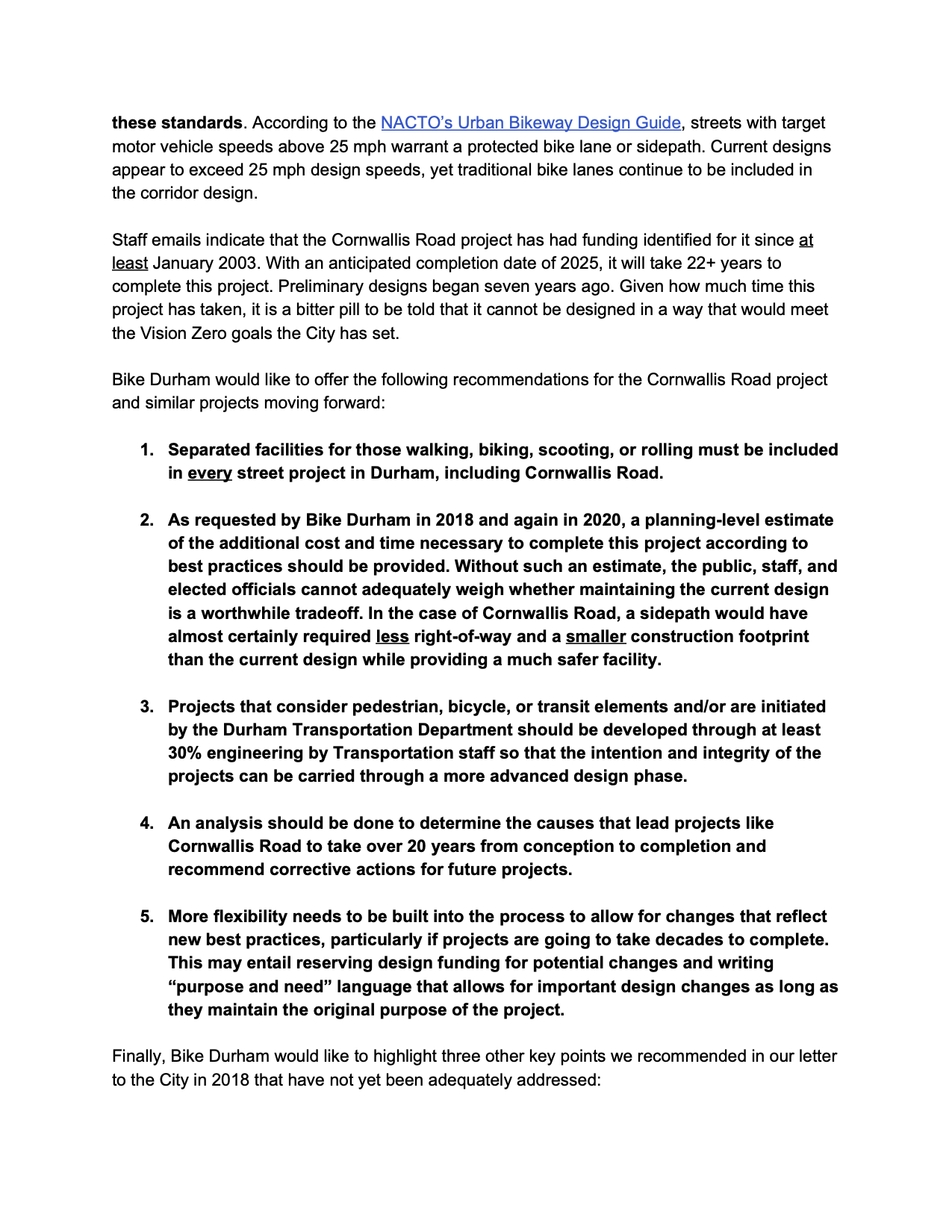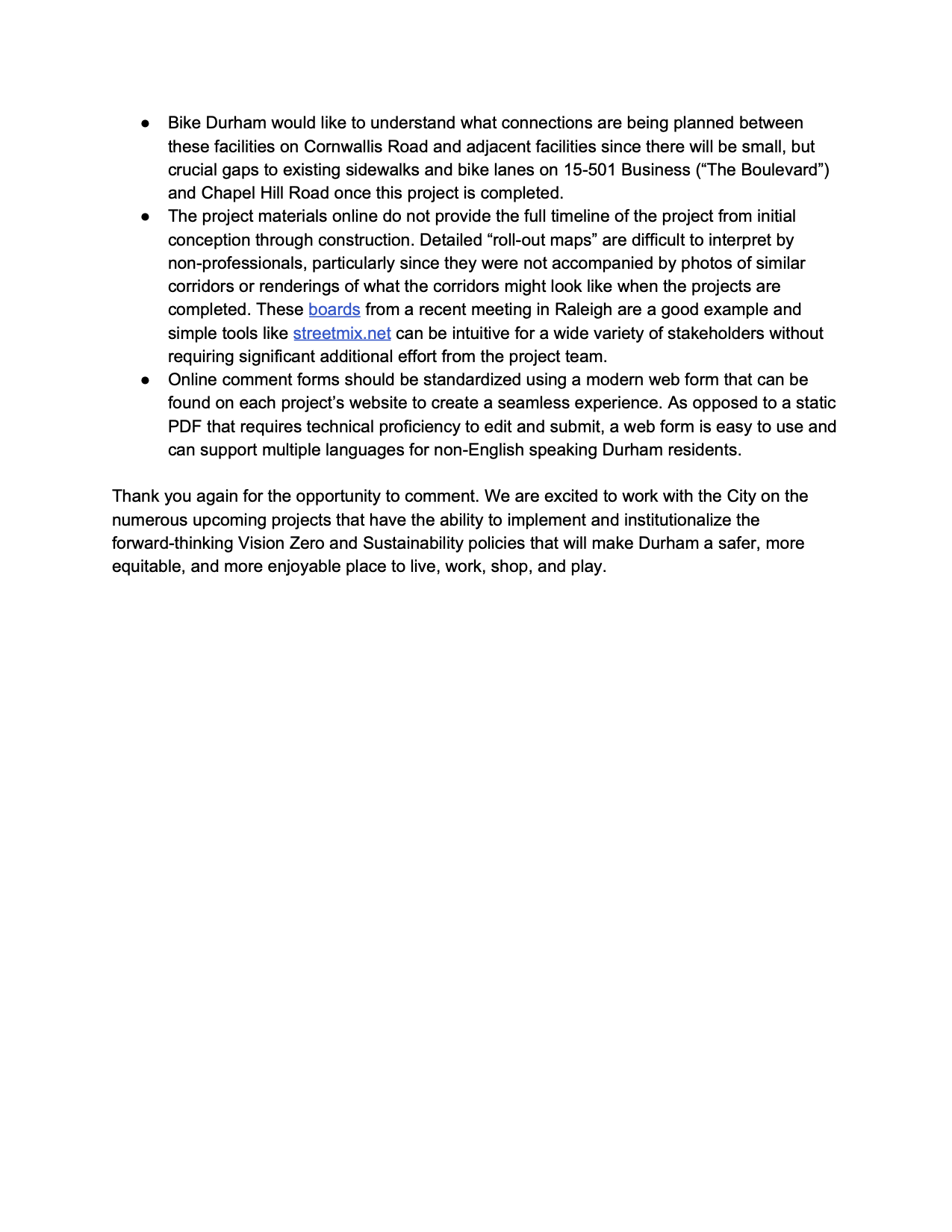We are urging the Durham County Commissioners, DCHC MPO Board members, and the GoTriangle Board of Trustees to listen to the voices of current transit riders and Black and brown residents as we move forward building a better transit system.
The op-ed is included below in its entirety:
Triangle infrastructure: For equity, put buses ahead of commuter rail in Durham
BY BONITA GREEN AND VANNESSA MASON EVANS
NOVEMBER 18, 2021
Civil rights consultant Stella Adams and Bike Durham board member Erik Landfried also signed on to this op-ed.
Residents of Braggtown and Merrick Moore, two historically Black communities northeast of downtown Durham, have requested many transportation improvements over the years, including sidewalks along major roads, bus shelters and more frequent bus service.
With the demise of the Durham-Orange light-rail project, half a billion dollars are available in the 2040 Durham Transit Plan. Any transit plan adopted must include 15-minute bus service via Route 9 in the heart of the Braggtown neighborhood and both bus service and sidewalks in the Merrick Moore neighborhood and in other communities of color throughout Durham.
Durham has a transportation system created through a history of decisions that have led to inequitable outcomes along racial lines. Nowhere is this more apparent than in our transit system.
Durham transit riders, most of whom are non-white and make less than $15,000 per year, face a daily gauntlet of streets with no sidewalks, bus stops with no shelters, and bus service that does not come frequently enough. It also takes a long time to get to their destination. And many parts of the county still lack bus service, despite rapid growth.
Before considering new large-scale projects, we must fix the broken infrastructure that exists in our under-served communities.
No one should have to walk in the street to get to a bus stop in a ditch. The good news is that there are many projects proposed that address these deficiencies and will make bus service more reliable, more frequent, and more abundant, which will increase economic and social opportunities for all Durhamites.
The most expensive project under consideration in the Durham Transit Plan is a commuter rail line between Durham and Wake counties. While the project would provide an alternative to driving, it would mostly do so during “peak” commute times, only running every 30 minutes during those times and every two hours in the middle of the day and at night. There is no weekend service proposed. Those service levels provide little utility for those with non-traditional work schedules.
Commuter rail is not a high priority for people of color in Durham. One of the survey questions for the Durham Transit Plan was “If passenger train is included, what else do we need to fund?” The number one response from people of color was “All of these transit improvements are more important than a passenger train.”
That same survey also confirmed what transit improvements people of color and daily transit riders prioritize: more hours of frequent and reliable bus service to more parts of Durham and the Triangle and better bus stops.
Commuter rail is not the most equitable use of resources. Setting aside local funding for commuter rail would delay new bus service and infrastructure by up to 10 years. According to data from GoTriangle, only 42% of the projected riders of the commuter rail would come from zero or one-car households. 91% of current GoDurham riders live in zero or one-car households.
To achieve equitable outcomes, the Durham County commissioners, Durham-Chapel Hill-Carrboro Metropolitan Planning Organization board, and the GoTriangle board must listen to the needs of current transit riders and communities of color and make sure projects are prioritized in the Durham Transit Plan that support those needs. Our communities have made it clear that we must improve our local and regional bus systems. These improvements cannot be delayed to provide local funding for commuter rail.
We have the opportunity in Durham to make transportation decisions that will lead to equitable outcomes. This is the time to seize it.



